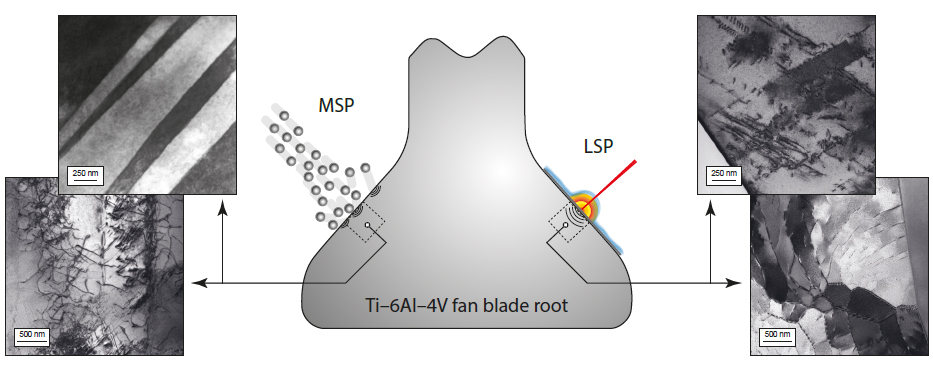Each time an aircraft makes a flight, the moving parts in an aerospace gas turbine engine are subjected to both high cycle vibrational stresses during the flight and low cycle thermal and mechanical stresses, with each flight being a single cycle for the low cycle stresses. As a consequence, these moving parts suffer from a life-limiting condition called fatigue. To prevent failure from fatigue, metallic shot peening and laser shock peening are used to introduce significant compressive surface stresses in the most highly stressed regions of Ti–6Al–4V fan blades. These compressive residual stresses improve the resistance to fatigue crack growth of these blades in service.
Here, a detailed analysis has been conducted of the microstructure of Ti–6Al–4V processed by metallic shot peening and laser shock peening. A notable feature of the material processed by laser shock peening is the almost complete absence of deformation twinning, contrasting with the frequent observation of extensive deformation twinning observed in the material processed by metallic shot peening. Furthermore, very different dislocation structures are produced in surfaces processed by these two techniques - laser shock peening produces more directional planar dislocations and networks of dislocation cells and sub-grains, whereas metallic shot peening produces long wavy tangled dislocation structures and shear bands. These observations have been rationalised as a function of the different strain rates of the two processes and the different physical processes involved.
Figure: Graphic illustrating metallic shot peening (MSP) and laser shock peening (LSP) together with examples of the microstructures produced by the two techniques in Ti–6Al–4V.
S. J. Lainé, K. M. Knowles, P. J. Doorbar, R. D. Cutts and D. Rugg, Acta Materialia 123 (2017) 350‒361

